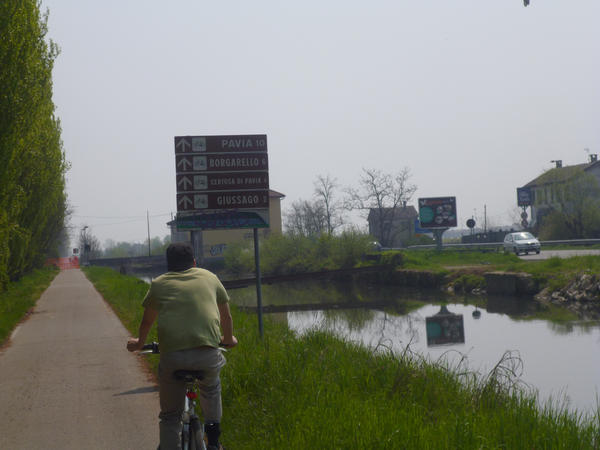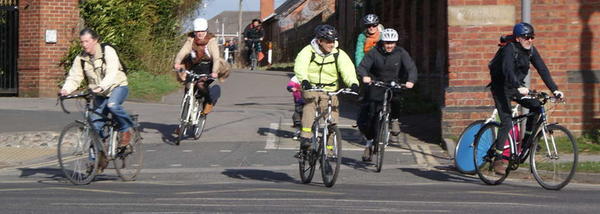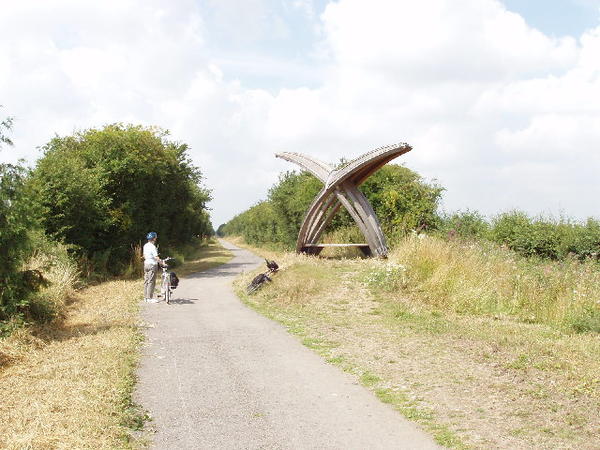
Become a supporter
Birmingham’s traffic-free routes are largely based on the canal system. This will get you comfortably to Edgbaston and Selly Oak, Wednesbury and Wolverhampton, or Gravelly Hill and Erdington. The city also has a small number of cyclepaths through country parks. The best is the Rea Valley route, part of National Cycle Network route 5, which wends attractively out from the city centre to Kings Norton and Longbridge.
A new set of Sustrans routes has recently opened in the north of the city, around Erdington and Sutton Coldfield. These connect with the canal paths to provide a safe, enjoyable alternative to the notorious A5127.

A campaign is taking shape in Italy to build Europe’s longest cycle path – a 420-mile route along the banks of the River Po, connecting Venice, Milan and Turin.
The €80m project, known as Vento (‘Wind’), would connect existing traffic-free paths along the river banks to make a flat, tarmaced route suitable for all ages. Paolo Pileri told the Guardian: “This cycle path is like the chain of a necklace… Turin is the first pearl, Valenza the second pearl; there are so many pearls – but at the moment we're just missing the chain.”
Italy’s economic situation is far from comfortable, of course, but tourism minister Massimo Bray has called the idea “exemplary”. As the Guardian points out, southern European countries have traditionally lagged behind northern Europe in cycling provision; could this be the turning point?
Visit the project site and find out about a forthcoming documentary (Italian-language).

cycle.travel is cycling inspiration – the best way to find a great bike route.
Full of in-depth content and unique, compelling tools for those who just want to ride, cycle.travel reaches cyclists who don’t use sites marketed to “athletes” or “sport riders”.
Our traffic is currently doubling year-on-year and we have exciting plans for the future. Our mapping solution is unique, combining the clearest online cycle cartography with a fast, responsive route-planner. That means engagement – visit lengths of 45 minutes are common.
Commercial opportunities on cycle.travel include section sponsorship; display advertising; and content development. Launching a new route or a local cycling initiative? Make sure it gets off on the right foot. We can ensure that your route or city is fully covered on cycle.travel from day one.
To discuss advertising opportunities, drop us a line at info@cycle.travel.

Our maps are made using open data from OpenStreetMap, licensed under the Open Database Licence; with additional UK data from Ordnance Survey, licensed under the Open Government Licence (© Crown copyright and database right 2019), and additional Canadian data from StatCan (Geography Division, Statistics Canada). UK traffic data is from the Department for Transport under the Open Government Licence. Additional US data from federal sources.
OpenStreetMap is made by people like you. If a cycle path, road, pub or café is missing, just head in and add it. It’ll then be available to thousands of other cyclists using cycle.travel, OpenCycleMap, CycleStreets, Sustrans’ printed maps and many other projects: we all take the same data and add our own spin to it.
Here at cycle.travel we’ve supported OpenStreetMap since its first months back in 2004; we’ve mapped countless miles of cycle routes and contributed a lot of the code that’s been used in the project over the years.
We aim to take updates from OpenStreetMap every month: it then takes around three days to do all the calculations to find the best routes. Here’s the date on which we last updated the data.
We do a lot of processing work to make the raw OSM map as useful as possible for cyclists (several thousand lines of code!). If you’re editing OSM, here are some of the things to keep in mind:
We also use Ordnance Survey data for UK built-up areas, Corine data for European built-up areas, and government open data for North America. We use both Ordnance Survey and NASA data for elevation.
If you find something missing or misleading in our maps and directions, head over to OpenStreetMap to fix it. But if OSM’s right, and cycle.travel isn’t doing what you’d expect with the data, we want to know. Post in the cycle.travel site forum and let us know what you think.
Once you’ve planned a route, click the GPS button on the left to download it. There are lots of different formats of GPS file: we generally recommend a ‘GPX track’ which works on pretty much anything, but if you have a newer Garmin or Wahoo, you might want to choose a ‘TCX course’ which includes turn-by-turn prompts.
For most Garmins, you then need to connect your unit to the computer via USB, and copy the file across to the ‘NewFiles’ folder (cycling Garmin units: instructions) or the ‘GPX’ folder (eTrex units: instructions).
For the newest Garmins (e.g. Edge Explore), you can use the routeCourse app to transfer the route directly from your phone to your Garmin.
We don’t have any experience with Wahoo GPS units, but you should be able to download it from cycle.travel on your phone by choosing the ‘GPS’ icon: click ‘Open in…’ to open it in the Wahoo app, and then it’ll appear on your GPS. If you have any experience getting this running, let us know!
We’re working on a cycle.travel app for your phone, but until then…
You’ll need to install an app that can open GPX files. There are many, but try:
Then back in cycle.travel, plan your route (and save it) and click the GPS button. This is under the ‘Share’ option at the bottom of the map screen on your phone. Alternatively, if you don’t see a ‘Share’ option, click the three-line button on the left of the map and the GPS button is there.
Click ‘Download’, and the route will be downloaded to your phone. It should open automatically in your app – you may need to click ‘Open in MapOut’ or something similar.
Yes! We now have a ‘paved only’ option, which avoids all gravel, earth and other unpaved surfaces. This takes up a whole bunch of memory on our servers, but so many people asked for it, we thought it was worthwhile.
The fast speed of our route-planner works means that it isn’t feasible to add lots more options: basically, the speed comes from precalculating all the best routes, which requires more memory, which means more expensive servers. But we aim to make it easy for you to adjust the route (by dragging) if there are sections you want to avoid.
Alternatively, you can turn the route-planner off between any two points, by clicking the first of the points and choosing ‘Go direct’ to the next one. This means you can plan a short stretch on a busy road even if cycle.travel doesn’t recommend it.
(If you want to read up on the maths behind cycle.travel’s super-fast routing algorithm, it’s known as Contraction Hierarchies.)
We’re developing an iPhone app at the moment and plan for it to be available in 2019, with Android to follow afterwards.
Our costs are covered by advertising, the commission from hotel bookings, and support from users, so we can’t offer a free routing API. However, if you do want to use our mapping and routing, drop us a line and we can chat.
If you’re looking for custom development work on cycle routing or cartography, our editor Richard Fairhurst would be delighted to talk to you. If you are looking for an off-the-shelf UK cycle routing API, we recommend you talk to the lovely people at CycleStreets. If you are looking for map tiles, talk to the equally nice people at Thunderforest.

Oxfordshire’s finest old railway path is the Phoenix Trail, from Thame to Princes Risborough. Perfectly flat, adorned with sculptured seats, and with a pleasant town at each end, it’s an ideal Saturday afternoon ride. Thame is 14 miles from Oxford and there is, obviously, no train service any more (otherwise there wouldn’t be a cycle path…): follow NCN 57 from the centre of town via Horspath.
Log in with your cycle.travel account:
| Password |
Or simply use your account on: